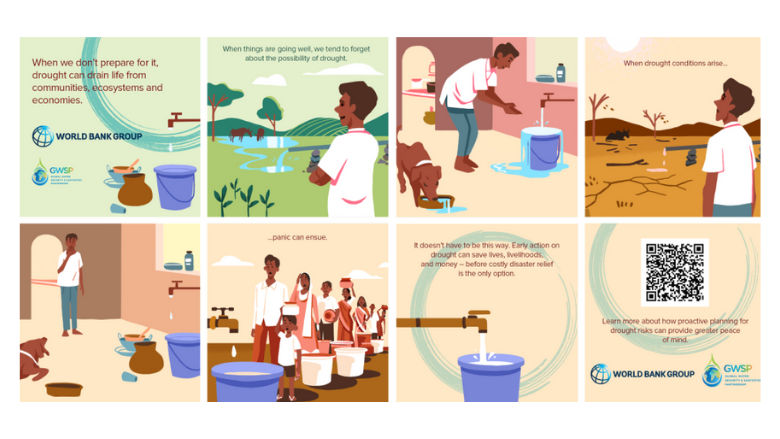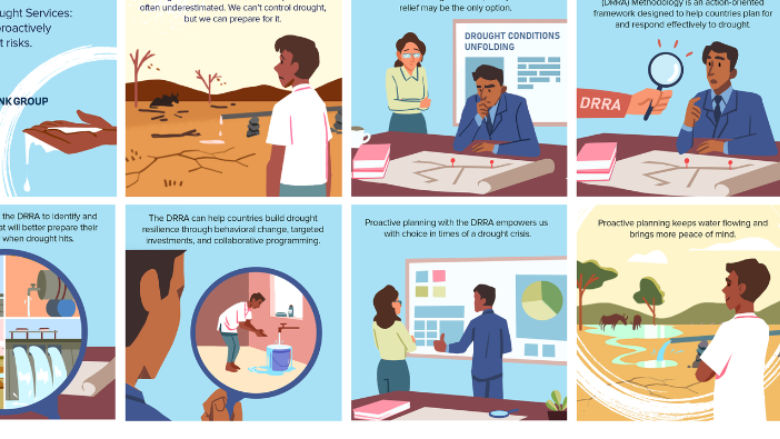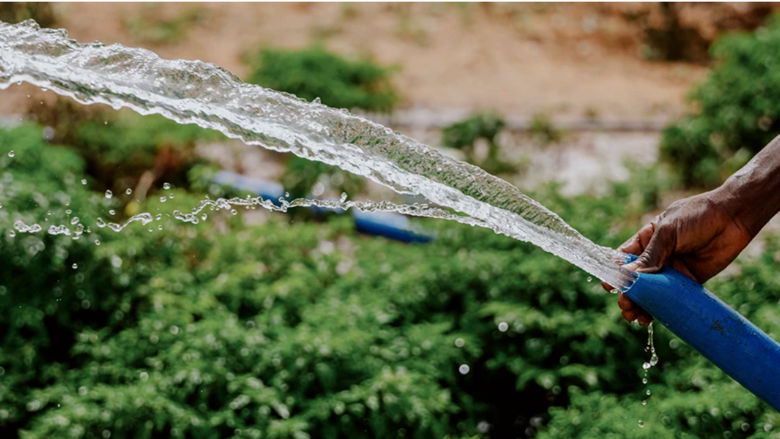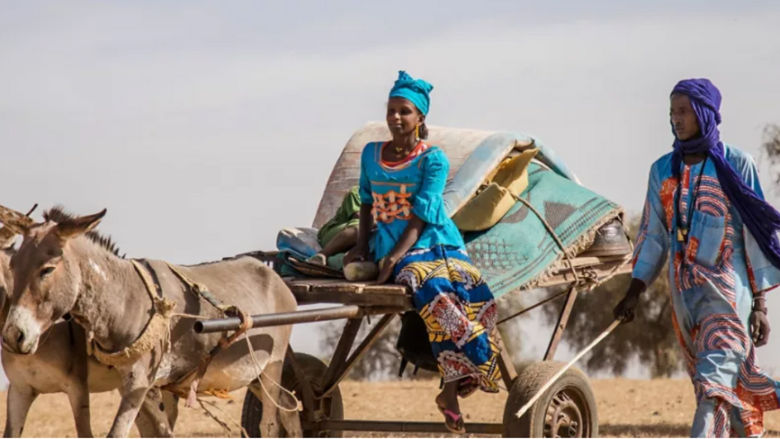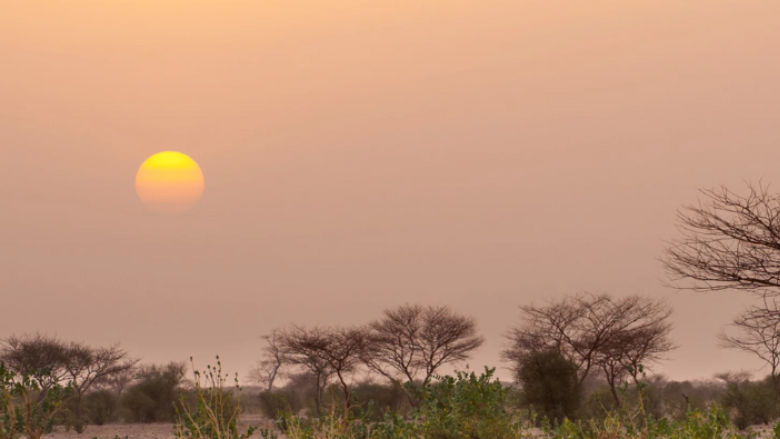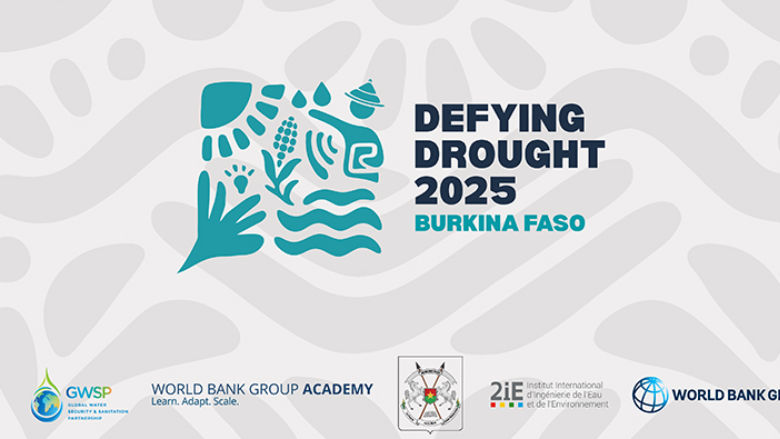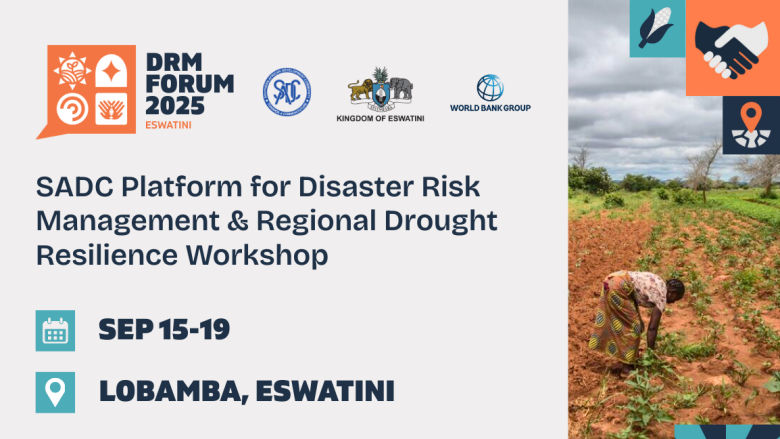Across the globe, droughts are becoming more frequent, severe, and widespread.
Droughts put economies, livelihoods, and lives at risk. In the last 50 years, extreme drought conditions have increased by 233 percent in some regions. Today, a tenth of the world’s population lives in countries marked by high or critical water stress. The world is experiencing an unprecedented water crisis—one that threatens economic advancement, the eradication of poverty, and the core of sustainable development itself. While the hydrological cycle goes through natural ebbs and flows, recent climate events require a new approach to sustainable development.
Droughts manifest as slow onset disasters and response is often delayed.
Although the impacts could be lessened with timely and coordinated action, droughts have historically been overlooked until they develop into full-fledged emergencies.
The term “hydro-illogical cycle” describes the reactive nature of drought management, because broad awareness of droughts often comes only when water scarcity has reached a critical stage, when there are far fewer options to mitigate the impacts. Eventually, there will be watershed restoration. As rain returns and the crisis subsides; the motivation to address droughts can turn toward apathy. During non-drought periods, anticipating droughts through early warning systems, and planning for droughts through myriad measures, are our best bet against crisis, and can reduce or even avoid impacts, minimizing physical and emotional suffering in the process.
Building drought resilience is more important now than ever.
To interrupt the cycle of apathy and panic that is most associated with drought response, we must pursue climate adaptation and sustainable development strategies and policies that make drought management proactive, effective, equitable, and resilient. This begins with investment in water infrastructure, data systems, and early warning mechanisms tailored to local needs. It demands a commitment to restoring degraded landscapes and watersheds and safeguarding the natural assets that underpin our societies. It calls for cross-sectoral collaboration—between ministries of water, agriculture, finance, health, and education—so that drought policy is integrated, not fragmented. And crucially, it requires the empowerment of women, youth, and marginalized groups, whose voices and innovations are vital to community resilience.
The World Bank Group provides tools to help countries proactively prepare for drought.
Drought is not a distant threat. It is an immediate reality that is reshaping lives, economies, and landscapes. The extent of drought impacts can be best mitigated by implementing drought management plans. Through technical support, risk financing, and knowledge exchange, the World Bank Group is helping countries proactively plan drought management and shore up resources to build drought resilience. We are committed to supporting countries to work toward a future where water scarcity no longer determines destiny, and where sustainable development is secured for all.





